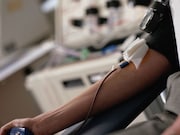Tag: Hospitals
U.S. Hospital Patients Receive More Opioids Versus Other Countries
Patients' perceptions of pain, pain medication may affect prescribing practices
In-Hospital Cardiac Arrests in the U.S. May Be Underestimated
Authors say that cardiac arrest is a 'major public health problem'
Current Antibiotic Stewardship Program Practices Characterized
Since 2013, active surveillance for MRSA reduced, monitoring of cleaning effectiveness increased
Hospitalized Pneumonia Patients Often Get Excess Antibiotics
Vast majority of excess treatment occurs with antibiotics prescribed at discharge
Considerable Number of Patients Receive Surprise Hospital Charges
18 percent of all ED visits, 16 percent of in-network hospital stays have at least one out-of-network charge
Nutrition-Focused Program at Home Health Agency Beneficial
Nutrition-focused quality improvement program can reduce rates of hospitalization, health care use
Better UTI Monitoring Needed After Hospital Admission in Adults
Many healthcare-associated, community-onset urinary tract infections develop after being discharged
Patterns of Inpatient Opioid Use Linked to Long-Term Use
Outpatient use at 90 days was seen for 5.9 and 3.0 percent of patients with and without inpatient use
Higher Surgical Volume May Improve Outcomes in Cervical Cancer
Findings show radical hysterectomy at high-volume centers tied to better survival in early cervical cancer
Peripherally Inserted Central Catheters Often Used in CKD
Despite guidelines, placement of PICCs common in those with advanced chronic kidney disease














